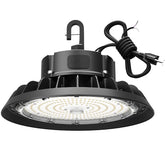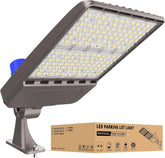The Visible Light Spectrum: From Newton’s Prism to Modern Photonics
The study of visible light—a narrow band of electromagnetic radiation perceptible to the human eye—has evolved dramatically since its early philosophical roots. From Isaac Newton’s pioneering prism experiments to today’s quantum mechanical models, our understanding of light’s spectral properties has revolutionized fields as diverse as optics, astronomy, and lighting design. This article explores the historical milestones of spectral discovery, the physics of color perception, and the practical implications of these insights in modern technology.

Historical Evolution: Unraveling Light’s Dual Nature
The scientific journey to decode light began in the 17th century with Sir Isaac Newton, whose 1666 prism experiment demonstrated that sunlight could be dispersed into a rainbow of colors. By refracting white light through a glass prism, Newton identified seven distinct hues: red, orange, yellow, green, blue, indigo, and violet—memorialized by the acronym ROYGBIV. Though indigo was later omitted due to its perceptual overlap with violet (modern spectra now recognize six primary colors), Newton’s work established light’s composite nature and laid the groundwork for spectral analysis.
Newton’s corpuscular theory, positing light as streams of particles, dominated until the 18th century, when Dutch physicist Christiaan Huygens challenged this view by proposing light’s wave-like behavior. The debate persisted until James Clerk Maxwell unified electricity, magnetism, and light in 1864 with his electromagnetic theory, mathematically proving light was an electromagnetic wave. A paradigm shift occurred in 1905 when Albert Einstein, analyzing the photoelectric effect, reintroduced light’s particle-like nature through photons—discrete energy quanta. This wave-particle duality, later formalized in quantum mechanics, remains central to modern physics.
The Physics of Color: Wavelengths, Frequencies, and Perception
Visible light occupies a minuscule fraction (380–750 nm) of the electromagnetic spectrum, yet this range encodes the entire chromatic universe humans perceive. Each color corresponds to a specific wavelength and frequency:
| Color | Wavelength Range (nm) | Frequency Range (THz) |
|---|---|---|
| Red | 620–750 | 400–484 |
| Orange | 590–620 | 484–508 |
| Yellow | 570–590 | 508–526 |
| Green | 495–570 | 526–606 |
| Blue | 450–495 | 606–668 |
| Violet | 380–450 | 668–789 |
Key Observations:
- Red light (longest wavelength, ~700 nm) bends least during refraction, while violet (shortest wavelength, ~400 nm) bends most—a phenomenon Newton quantified in his Opticks (1704).
- Frequency and wavelength share an inverse relationship (c=λ×f), where the speed of light (c) remains constant (~3 × 10⁸ m/s). Higher-frequency violet light (~789 THz) carries more energy per photon than lower-frequency red light (~484 THz).
- “White light” (e.g., sunlight) is not a single wavelength but a superposition of all visible frequencies. Daylight (~5000 K on the Kelvin scale) mimics this balance, enabling technologies like high-CRI LEDs to replicate natural illumination.
The Biology of Color Vision: From Retina to Cognition
Human color perception begins when photons strike retinal photoreceptors—cones (for color) and rods (for low-light vision). Three cone types, sensitive to short (S), medium (M), and long (L) wavelengths, correspond roughly to blue, green, and red detection. Neural processing in the brain’s visual cortex synthesizes these signals into the rich palette we experience.
Notable Phenomena:
- Metamerism: Different spectral compositions can produce identical color perceptions (e.g., “white” from LEDs vs. sunlight).
- Color Constancy: The brain adjusts perception under varying lighting to maintain object color consistency—a critical factor in lighting design.
- Spectral Sensitivity: Humans peak in green light sensitivity (~555 nm), explaining why monochromatic green lasers appear brighter than other colors at equal intensity.
Modern Applications: Harnessing Spectral Knowledge
-
LED Technology:
Tunable LEDs leverage precise wavelength control to achieve desired color temperatures (e.g., 2700 K for warm white, 6500 K for cool daylight). Phosphor-coated LEDs convert blue light into broad spectra, mimicking natural light while enhancing energy efficiency. -
Medical Imaging:
Narrow-band imaging (NBI) uses specific blue/green wavelengths to enhance tissue contrast in endoscopy, improving cancer detection. -
Environmental Sensing:
Spectrometers analyze reflected or emitted light to monitor pollutants, assess crop health, or study atmospheric composition—key tools in climate science. -
Art and Design:
Museums employ UV-filtered lighting to protect pigments, while retailers use warm lighting (~3000 K) to create inviting atmospheres that boost sales.
Beyond the Visible: Infrared and Ultraviolet
While invisible to humans, adjacent spectral regions have transformative applications:
- Infrared (IR): Thermal imaging, night vision, and fiber-optic communication.
- Ultraviolet (UV): Sterilization, fluorescence microscopy, and forensic analysis.

Conclusion: Light as a Bridge Between Science and Sensation
The visible spectrum is more than a natural phenomenon—it is a lens through which we interpret reality. From Newton’s prism to Einstein’s photons, each discovery has deepened our mastery of light, enabling technologies that shape modern life. As consumers, understanding spectral properties empowers informed choices—whether selecting home lighting that enhances mood or office environments that boost productivity. In science, it drives innovations from quantum computing to sustainable energy. By embracing both the physics and poetry of light, we illuminate pathways to a brighter future.
For further exploration, consult resources on chromaticity diagrams, spectral power distributions, or the CIE 1931 color space—tools that translate light’s abstract properties into practical design solutions.








